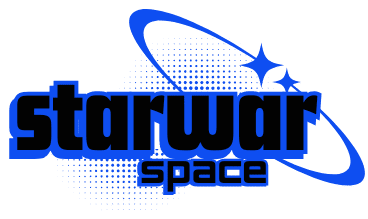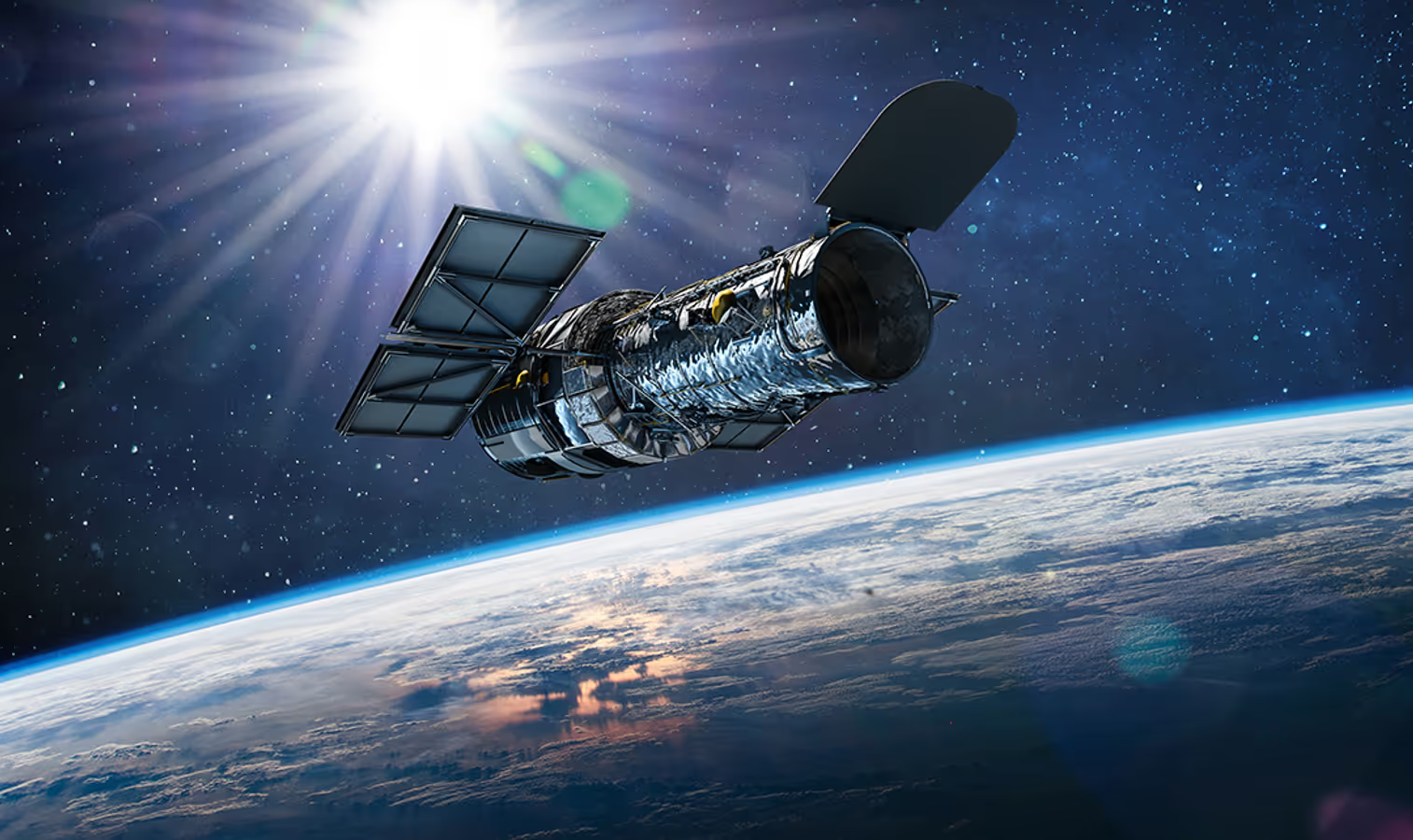The Hubble Telescope is arguably the most influential scientific instrument ever built. Orbiting above Earth since 1990, Hubble has captured the imagination of millions and rewritten astronomy textbooks. It’s not just a telescope—it’s a time machine, camera, and cosmic detective all in one.
With over 1.5 million observations, it has revealed secrets of the early universe, black holes, exoplanets, and more—proving that our curiosity has no limit when paired with innovation.
What Is the Hubble Telescope?
The Hubble Space Telescope (HST) is a space-based observatory jointly developed by NASA and the European Space Agency (ESA). It orbits about 547 km (340 miles) above Earth, free from atmospheric distortion, allowing it to capture crystal-clear images in visible, ultraviolet, and near-infrared light.
It is named after Edwin Hubble, the astronomer who discovered that the universe is expanding.
History and Launch of the Hubble Telescope
The idea for a space telescope began in the 1940s, but funding and technical challenges delayed it until the 1980s.
-
Launched: April 24, 1990, aboard Space Shuttle Discovery (STS-31)
-
Initial flaw: Its mirror had a spherical aberration, resulting in blurry images
-
Public disappointment led to NASA’s first servicing mission in 1993, restoring clarity
Since then, Hubble has become a symbol of redemption and scientific achievement.
Key Technical Specifications
| Feature | Specification |
|---|---|
| Mirror Diameter | 2.4 meters (7.9 feet) |
| Length | 13.2 meters (43.5 feet) |
| Weight | 11,110 kg (24,490 lb) |
| Orbit | Low Earth Orbit (547 km altitude) |
| Instruments | WFC3, COS, STIS, NICMOS, ACS, FGS |
Each of these instruments serves a unique role—analyzing light spectra, capturing wide-field images, or studying stellar composition.
Hubble’s Imaging Technology
Hubble captures light through its primary mirror, focuses it onto its instruments, and sends data back to Earth. Key features include:
-
Ability to image light from billions of years ago
-
Ultra-precise gyroscopes and star trackers for stability
-
Real-time commands from mission control for targeting specific objects
This makes it ideal for studying galaxies, nebulae, and deep space structures.
Early Problems and First Servicing Mission
Shortly after launch, scientists noticed blurry images. Investigations revealed the mirror was polished too flat by 2.2 microns. To fix it:
-
NASA launched STS-61 in December 1993
-
Installed a corrective optics package (COSTAR)
-
Added new instruments like Wide Field and Planetary Camera 2 (WFPC2)
This mission transformed Hubble from a flop into a legend.
Major Servicing Missions (2-5)
Over the years, astronauts aboard the Space Shuttle upgraded and maintained Hubble:
-
Servicing Mission 2 (1997): New instruments and gyroscopes
-
Servicing Mission 3 (1999-2002): Battery and computer upgrades
-
Servicing Mission 4 (2009): Last mission; installed WFC3 and repaired ACS
These missions kept Hubble technologically competitive for over 30 years.
17 Greatest Discoveries by the Hubble Telescope
-
Confirmed the expansion rate of the universe
-
Found evidence of dark energy
-
Captured Pillars of Creation in the Eagle Nebula
-
Mapped galactic collisions
-
Spotted the most distant galaxy ever seen
-
Discovered atmospheres on exoplanets
-
Tracked asteroid and comet impacts
-
Observed the birth of stars
-
Watched the death of supernovae
-
Helped determine the age of the universe
-
Found black holes in galaxy centers
-
Created the Hubble Deep Field
-
Discovered a “cosmic lens” using gravitational lensing
-
Traced the structure of dark matter
-
Studied the chemistry of early galaxies
-
Confirmed water vapor in Jupiter’s atmosphere
-
Measured precise distances to distant galaxies
Each discovery pushed the boundaries of what we thought we knew.
Contribution to Understanding the Big Bang
One of Hubble’s most profound contributions is helping scientists calculate the age of the universe at approximately 13.8 billion years. Using:
-
Cepheid variable stars to measure cosmic distances
-
Observations of the universe’s expansion rate (Hubble constant)
It confirmed the Big Bang theory, showing that the universe is not static, but expanding outward—validating Edwin Hubble’s early 20th-century findings with powerful modern evidence.
How Hubble Observes Distant Galaxies
By capturing light that has traveled for billions of years, Hubble allows us to look back in time:
-
The Hubble Ultra Deep Field images revealed over 10,000 galaxies in a tiny patch of sky.
-
Light from these galaxies began its journey when the universe was only 400–800 million years old.
-
These images revolutionized our understanding of early galaxy formation.
The telescope acts as a cosmic archaeologist, uncovering secrets from the infancy of the cosmos.
Discovering Exoplanets with Hubble
Although not designed to find exoplanets, Hubble made pivotal discoveries:
-
Detected atmospheres of exoplanets like HD 209458b
-
Identified water vapor, carbon dioxide, and methane in alien atmospheres
-
Helped refine the mass and orbit of known exoplanets
This laid the groundwork for future telescopes like James Webb, which are designed specifically for exoplanet characterization.
Hubble’s Role in Dark Energy Research
In 1998, Hubble data contributed to one of astronomy’s biggest surprises: the universe’s expansion is accelerating, not slowing down.
-
This suggested the presence of a mysterious force called dark energy.
-
Observations of Type Ia supernovae in distant galaxies provided the evidence.
-
Hubble continues to refine our estimates of how much of the universe is composed of dark energy (68%).
This discovery earned the 2011 Nobel Prize in Physics for three scientists—Hubble played a central role in their research.
Star Birth and Death Through Hubble’s Lens
Hubble has produced stunning images of stellar nurseries and dying stars:
-
Carina Nebula and Orion Nebula show where stars are born
-
Supernova 1987A helped us understand stellar explosions
-
Images of planetary nebulae display the dramatic ends of medium-sized stars
These visuals are not just beautiful—they offer vital data about stellar lifecycles, enriching our cosmic knowledge.
Comparing Hubble and James Webb Telescopes
Though they’re often compared, Hubble and James Webb Space Telescope (JWST) are complementary:
| Feature | Hubble | James Webb |
|---|---|---|
| Launch Year | 1990 | 2021 |
| Wavelengths | UV, visible, near-infrared | Primarily infrared |
| Orbit | Low Earth Orbit | L2 Halo Orbit |
| Mirror Size | 2.4 m | 6.5 m |
| Focus | Galaxies, stars, exoplanet atmospheres | First stars, early galaxies, deep space |
Hubble’s strength is in visible and ultraviolet light, while JWST specializes in infrared astronomy. Together, they provide a fuller view of the universe.
Cultural and Scientific Legacy of Hubble
The Hubble Telescope is more than a scientific instrument—it’s a cultural icon:
-
Featured in countless documentaries, books, and films
-
Used in classrooms and museums worldwide
-
Inspired generations of students to pursue science, astronomy, and space engineering
Its images hang in art galleries and adorn educational materials, showing the intersection of science and beauty.
What Happens After Hubble?
Although it has exceeded expectations, Hubble won’t last forever:
-
It’s operating well past its original 15-year lifespan
-
No more servicing missions are planned, since the Space Shuttle was retired in 2011
-
NASA and ESA hope to keep it functioning through 2030, depending on hardware health
-
Successors like James Webb and Nancy Grace Roman Telescope will build on its legacy
Hubble may one day be deorbited or boosted into a higher orbit for preservation—but its impact will endure.
FAQs About the Hubble Telescope
1. How far can the Hubble Telescope see?
Hubble can observe galaxies over 13 billion light-years away, nearly reaching the edge of the observable universe.
2. Is Hubble still working?
Yes. As of 2025, it’s still fully operational and conducting science observations regularly.
3. How does Hubble send images back to Earth?
It transmits data via NASA’s Tracking and Data Relay Satellite System (TDRSS), which relays images to Earth-based stations.
4. Can Hubble see exoplanets directly?
Not directly, but it can detect atmospheric signatures of exoplanets by observing how starlight filters through their atmospheres.
5. How long did it take to build Hubble?
Planning began in the 1970s, with the telescope launching in 1990—over 20 years of development and testing.
6. What makes Hubble different from Earth telescopes?
It avoids atmospheric distortion, which allows it to take sharper and clearer images in a variety of wavelengths.
Conclusion
The Hubble Telescope has shown us the birth of stars, the structure of galaxies, and the farthest corners of the universe. It’s rewritten what we know about cosmic evolution, dark energy, and the very fabric of space-time.
Decades after launch, it remains a living legacy of human ingenuity, proving that when we aim high—and sometimes make mistakes—we can still achieve the extraordinary. Long after it stops working, Hubble’s impact will shine on, much like the stars it revealed.
🔗 External Resource:
For mission updates and image archives, visit NASA’s Hubble Site.

